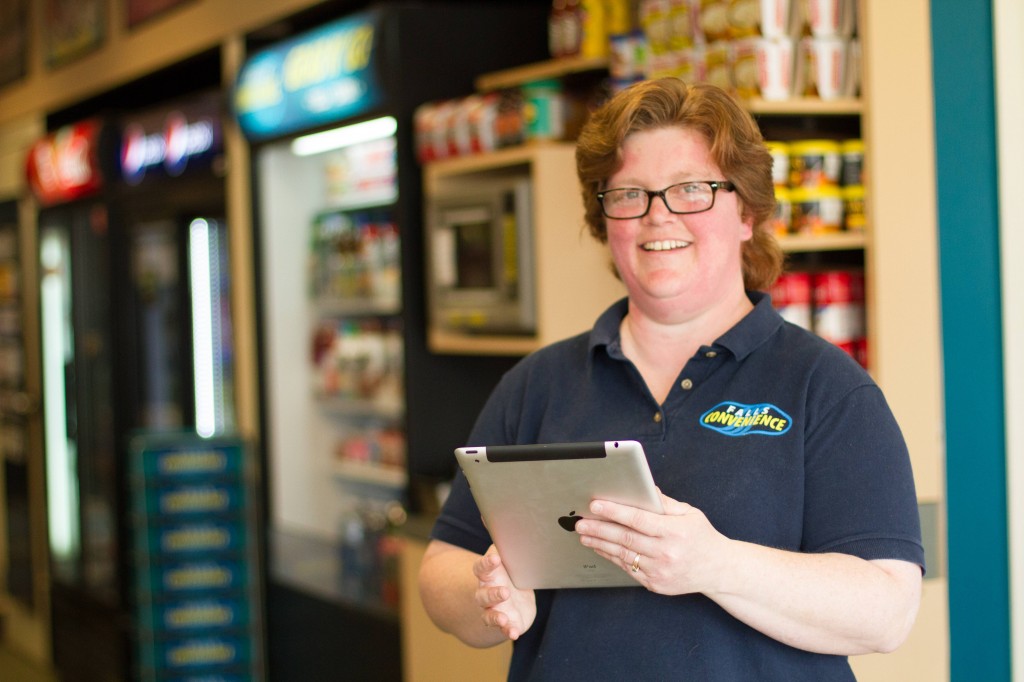E-Cigarettes: Navigating a new category
 It’s a rare occurrence when an entirely new category enters the market and shakes up an industry. But that’s exactly what has happened with electronic cigarettes. First introduced in the early 2000s, e-cigarettes have taken off with consumers faster than the laws can govern them.
It’s a rare occurrence when an entirely new category enters the market and shakes up an industry. But that’s exactly what has happened with electronic cigarettes. First introduced in the early 2000s, e-cigarettes have taken off with consumers faster than the laws can govern them.
“As many people know, both the provincial and federal governments have their tobacco files open,” says Christopher O’Connor, Product Manager with House of Horvath. “It’s only reasonable to expect that they’re considering classifying other-tobacco-like products while their files are open. The popularity of the e-cigarette category has caught most regulators off guard,” he adds.
Many retailers are caught in the middle. They wonder which products they can sell, whether or not they can display them in store, and how to choose which brands they’ll carry.
Although there are a few unknowns, there are certain rules every c-store owner should adhere to: e-cigarettes that contain nicotine are not approved by Health Canada, e-cigarettes should not be sold to anyone under 19, and for some cities and regions across the country, e-cigarettes cannot be used indoors or on public property where smoking is prohibited.
Navigating a new market

Heather Gifford, Manager of Falls Convenience in Niagara Falls, ON says there may be quite a few unknowns, but all retailers can do is continue to sell these products responsibly and within the same best practices as tobacco. That means following We Expect ID guidelines for age verification, staying away from nicotine-containing products (which don’t have Health Canada’s approval), and working with companies she knows and trusts.
O’Connor recommends doing some research when choosing which brands to carry, and asking questions, such as: Are these products manufactured with harmful chemicals? Do they produce harmful chemicals? Are the components safe? Are the components certified? It’s up to c-retailers to do their homework and ensure they’re confident in the products they’re carrying.
Although some argue that nicotine-containing e-cigarettes can be a benefit to those looking to cut back on tobacco use, they’re not approved by Health Canada, and that means carrying them in your store is a risk.
“House of Horvath’s product line, Smoke NV, is definitely challenged because none of our products contain nicotine, however we take pride in the quality of the Smoke NV product line. It’s easy for an e-cigarette company to introduce nicotine liquid to their product lines, but our challenge is gauging the regulatory climate before committing our partners in an unregulated direction,” says O’Connor.
Finding trusted partners
Although the e-cigarette category isn’t growing in Gifford’s store as quickly as nearby vape shops, it’s a category she has to pay attention to. “The brands we do sell are the ones distributed by reputable tobacco companies such as Casa Cubana and House of Horvath,” she says. “I don’t have sufficient time to adequately research every company that comes through the door. By choosing to deal only with these bigger companies, I am trusting in their ability to do that research for me.”
Building good relationships with your supplier partners can help you keep on top of category trends, regulation and product standards.
“Retailers need to rely on their supplier partners to provide products that meet the highest bench mark in the industry,” says O’Connor. “The decision to enter this category should be a cautious one. If the retailer isn’t confident in due diligence of their supplier partners, I would recommend taking a pass on the product.”
Understanding your responsibility
C-retailers already know the importance of age testing and responsible retailing because they sell lottery and tobacco in their stores on a daily basis.
“Just about every retailer in our area, including us, has been restricting the sale of these products to age 19 or over for quite some time,” says Gifford. “It seems the c-store community realized these products weren’t appropriate for teenagers before the law ‘caught up’. It has always been our store policy, since day one, to ID for the sale of e-cigarettes.”
This is a new category with seemingly limitless potential for the retailers who can get it right. Reach out to your supplier partners, do your own research, and as always, focus on responsible retailing.
Looking to sell e-cigarettes in your store?
Follow these best practice guidelines from the Canadian Convenience Stores Association (CCSA) so you can continue to be a responsible community retailer:
- Look to Health Canada for guidance. Convenience retailers should not sell nicotine e-cigarettes, which are not approved by Health Canada.
- Follow tobacco best practices. Convenience retailers should follow the applicable federal, provincial and municipal laws for verifying the age of purchasers of tobacco and apply those standards to the sale of non-nicotine e-cigarettes.
- When in doubt, ID. Convenience retailers should always ask any person who looks to be under the age of 25 to provide valid, government-issued photo ID to establish proof of age.
- Understand all of the laws. Convenience retailers should ensure all staff are properly and regularly trained on age-verification practices provided through education tools like the CCSA’s We Expect ID training program. It’s designed to ensure convenience store employees understand all federal and provincial laws related to the sale of age-restricted products.
- Demonstrate your commitment to responsible retailing. Convenience retailers should display all proper signage, including posters, stickers and decals, such as those offered through the We Expect ID program, conveying the message that your store will not sell age-restricted products to minors and will only sell age-restricted products to customers who can show proper ID.
Not sure about e-cigarette rules and regulations in your area?
Reach out to your local Health Department and ask them to walk you through the ins and outs of the category.
